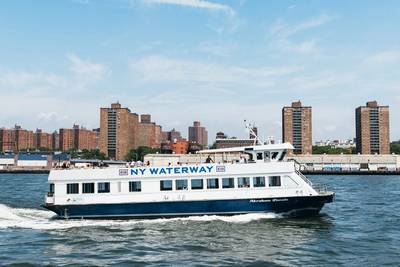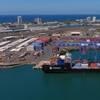For Ferries to Go Green, Governments Will Need to Provide the Green
Whether it is from international organizations or state government agencies, there is growing pressure on ferry operators to meet stringent goals to reduce the environmental toll from their operations.
The California Air Resource Board’s Commercial Harbor Craft Regulation issued the most stringent of these policies, which requires all short-run ferries to achieve zero emission by January 1, 2026. But it’s not just California that wants this industry to clean up its act. The United Nations’ International Maritime Organization has set goals to reduce carbon intensity of all ships by 40% by 2030.
Ferry transport is an ideal sector for electrification. Almost half of the routes operated in the United States are five nautical miles or less, meaning they have relatively low power requirements to operate. They also operate predictable schedules between two designated locations, streamlining the process for electrification planning.
The environmental benefits are indisputable. Ferry electrification has proven air quality benefits including reduced greenhouse gas, particulate matter 2.5, nitrous oxide, and sulfur oxide emissions. Leveraging existing technology, such as shore power, hybridization, and electric propulsion, enables reduction of up to 800,000 tons of CO₂, according to Siemens energy.
In November 2023, the Federal Transit Administration awarded $220 million in grants to fund 13 projects to modernize ferry operations, replace aging vessels, and upgrade ferry terminals.
The grants are critical to helping operators meet goals for reducing greenhouse gas emission set by regulatory agencies. This is good news but represents a small portion of the multi-billion-dollar effort it will take to electrify the industry.
Of the FTA’s $220 million award, $15.9 million was directed to the Water Emergency Transportation Authority (WETA) for upgrading its ferry floats to include battery energy storage systems. WETA operates throughout the San Francisco Bay, providing critical transbay services and reducing road congestion. Over the last two years, WETA has been developing a blueprint for transitioning its fleet of 16, high-speed vessels to zero emission to comply with California requirements and demonstrate its leadership in sustainability. This transition comes at a considerable price, but it is achievable with the help of local, state, and federal incentives.
 © sheilaf2002 / Adobe Stock
© sheilaf2002 / Adobe Stock
In WETA’s operations, it takes two to three minutes to load or unload a vessel, depending on its size. The short dwell times and projected power requirements of the vessels result in abrupt and extreme power draws from the grid, increasing stress on an already constrained system.
These peak demands can be alleviated by interconnecting battery energy storage systems that can discharge when vessels are charging. Many of the terminals are in dense, urban areas with limited space availability, however, and cannot accommodate batteries on the shoreside. To address that constraint, WETA installed batteries in the floats, just one of the creative solutions it implemented to address grid and space constraints with electrification.
WETA is one of many U.S. ferry operators contemplating a sustainable transition, but electrifying fleets comes with a significant upfront investment. Washington State Ferries, as an example, will need nearly $4 billion to complete the transition of its full fleet and terminal upgrades. Costly grid infrastructure upgrades can be mitigated through the interconnection of battery energy storage systems, but there are other significant capital costs. It can cost between $6 million and $15 million for a new vessel or to upgrade an existing one. Furthermore, most terminals require modernization to accommodate the increased power requirements. That can involve installing new conduit, transformers, duct banks, switchgear, and utility disconnects.
Ferry electrification is not the future, it is the now. The technology is proven and only going to become more efficient with near-term advancements. Electrifying the ferry system is a major undertaking that requires a significant investment of procure or upgrade vessels and upgrade terminals to accommodate increase power requirements. However, many operators, particularly small, privately owned operations, may not be able to afford the cost of electrification and will rely on considerable federal incentive to realize their sustainability initiatives.














